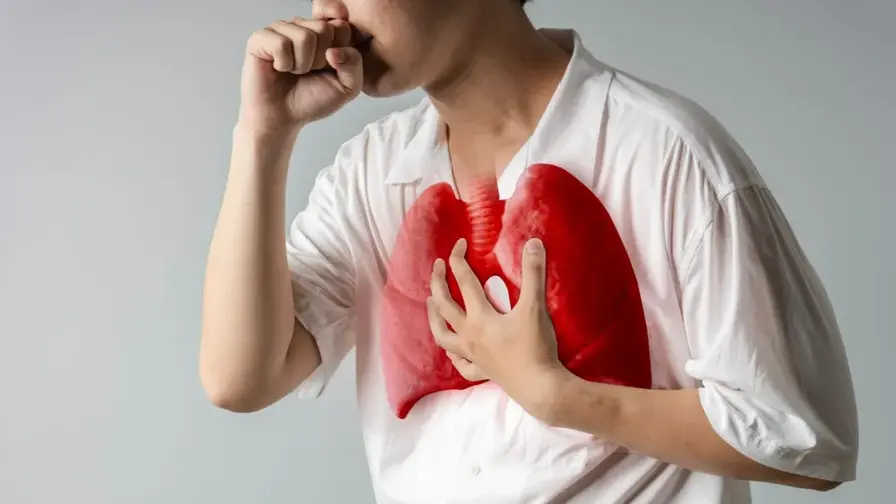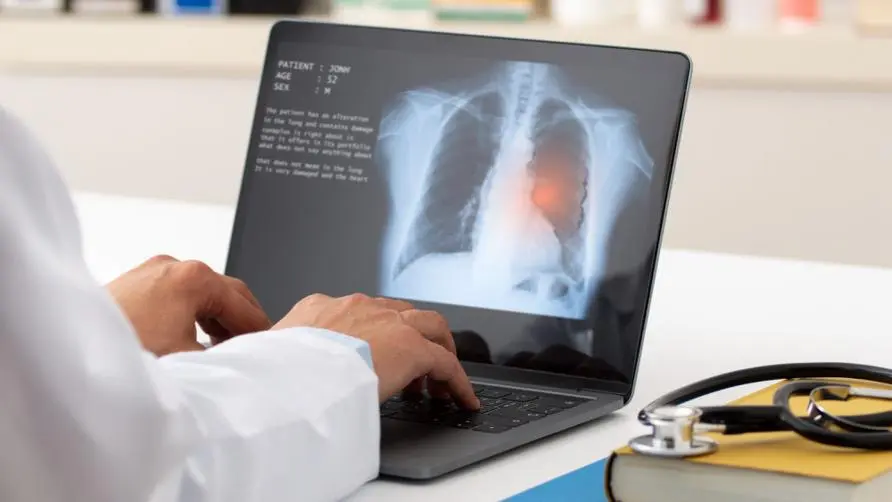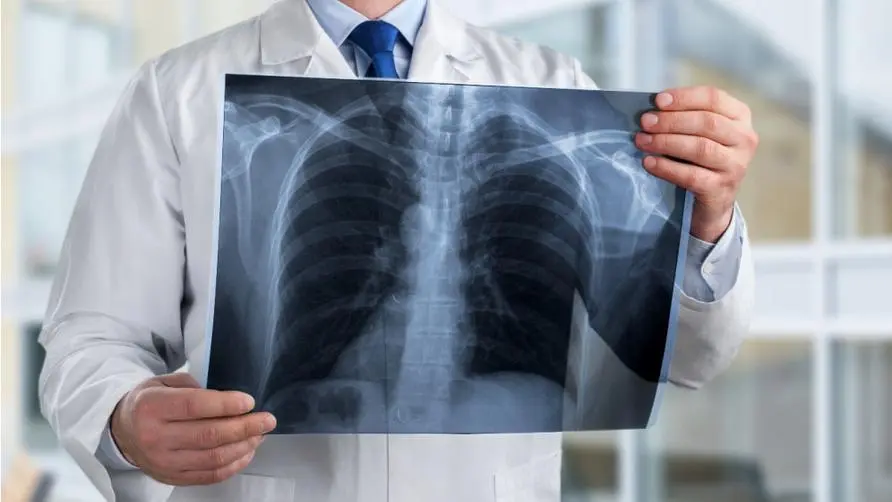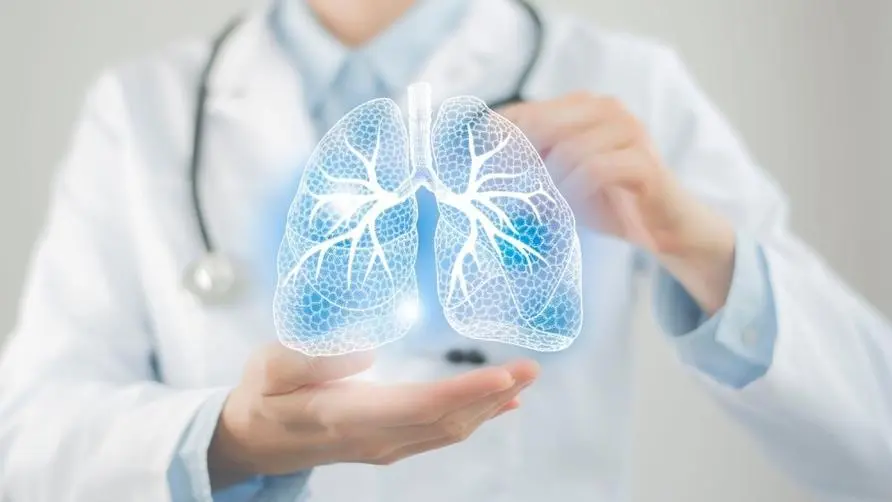Wang Jianmin was shocked to die from lung adenocarcinoma! Taiwan's population with lung cancer is "more non-smokers than smokers" Doctor: More than half of those with symptoms are in advanced stages

Artist Wang Jianmin was shocked to die of lung adenocarcinoma at the age of 56. Cancer has been the leading cause of death in the country for 42 consecutive years, and lung cancer is the “triple crown” of cancer in Taiwan: the number of incidences, the number of deaths, and the proportion of late-stage cases all rank first. Although the Taiwan Ministry of Health and Welfare has promoted publicly funded low-dose computed tomography (LDCT) screening in July 2022, more than half of Taiwan’s lung cancer patients are diagnosed at an advanced stage, and lung adenocarcinoma is the majority.
Wang Jianmin was shocked to die of lung adenocarcinoma! “There are more people with lung cancer in Taiwan than non-smokers than smokers”?
According to reports, Wang Jianmin was diagnosed with stage 4 lung adenocarcinoma last year after a check-up for back pain. Subsequently, he suffered a rapid weight loss due to multiple rounds of chemotherapy. He had no choice but to reveal that he “doesn’t smoke or drink”, so why did cancer still come to him? Li Chunhui, an attending physician in the Department of Medical Oncology, National Cheng Kung University Hospital, said that the pathological types of lung adenocarcinoma have corresponding risk factors. For example, the causes of small cell lung cancer and squamous cell carcinoma are directly related to smoking; lung adenocarcinoma is affected by environmental factors. Such as air pollution PM2.5 or family history, the impact is more obvious.
Dr. Li Chunhui said that lung adenocarcinoma accounts for about 70% of the cancer population and is the lung cancer with the highest incidence rate among non-smoking women. This shows that shared lifestyle and growth environment may be carcinogens. In the past, it has been discovered that after a child was diagnosed, the mother subsequently developed lung cancer. In addition, lung adenocarcinoma may develop micro-metastasis when the tumor size is small, and it is even more necessary to actively use low-dose computed tomography and other examinations to help early detection.
Pay attention to coughing up blood, weight loss, and chest pain! When lung cancer occurs, symptoms may be “all over the body”
Early-stage lung cancer has no obvious specific symptoms. In the past, when there were no good screening tools, most lung cancer patients were diagnosed at an advanced stage, resulting in a very poor survival rate and prognosis. Information published by the U.S. Centers for Disease Control and Prevention (CDC) points out that common lung cancer symptoms include persistent cough, blood-streaked sputum or hemoptysis, shortness of breath, wheezing during breathing, persistent chest pain, unexpected weight loss, loss of appetite, etc. .
If the tumor begins to compress the left recurrent laryngeal nerve, it may cause vocal cord paralysis and hoarseness. Tumors may also cause lung atrophy, reduce lung capacity, or cause pleural hydrops. Patients may experience symptoms such as chest tightness and difficulty breathing. Because lung cancer may metastasize to any other area, for example, metastasis to the brain may cause headaches, vomiting, paralysis, and visual impairment. Metastasis to the liver is more likely to cause abdominal distension and jaundice.
Dr. Wang Jinzhou, an attending physician in the Department of Thoracic Medicine at Kaohsiung Chang Gung Memorial Hospital, pointed out that the lungs, brain, liver, bones, and adrenal glands are the five most common metastasis locations of lung cancer. Among them, the treatment prognosis of brain metastases and liver metastases is not ideal; bone metastases Patients may seek consultation from an orthopedic department due to pain, only to be accidentally discovered to be caused by lung cancer. As for brain metastasis, which is relatively common among lung adenocarcinomas, many patients seek treatment at neurology or neurosurgery departments due to headaches, and are only confirmed to have lung adenocarcinoma metastases after surgical resection.
Not only smoking, but also air pollution can affect the lungs! What are the high risk factors for lung cancer?
In addition to smoking, family history of lung cancer, and environmental factors, what other known risk factors for lung cancer are there? Dr. Ke Haowen, chairman of the Taiwan Lung Cancer Society, said that the occurrence of lung adenocarcinoma may be related to acquired somatic mutations (Somatic Mutation), including the most common gene mutations in Asians such as EGFR, ALK, ROS1, etc. In recent years, it has been found that lung cancer patients who do not smoke do " Not a few."
Dr. Ke Haowen said that major risk factors for lung cancer such as radon, asbestos, smoking, second-hand smoke, oil smoke, and suspended particles in air pollution have all been linked to lung cancer. Taiwan Health Promotion Administration guidelines also emphasize that in addition to exposure to radon and asbestos, groups who are long-term exposed to heavy metals (such as chromium, cadmium, arsenic, etc.), diesel engine exhaust, or asbestos are also at a higher risk of developing lung cancer. . People who have a history of lung diseases such as asthma, chronic obstructive pulmonary disease, tuberculosis, etc. should pay more attention to the possibility of lung cancer.
What are the differences in treatment between early-stage and late-stage lung cancer? Treatment options for highly malignant and inoperable patients
What are the differences in treatment between early-stage and late-stage lung cancer? Dr. Li Chunhui explained that early-stage lung cancer refers to tumors between “carcinoma in situ and stage 3B” in cancer staging, and the highest priority treatment consideration is surgery. If the lung cancer is highly malignant and inoperable, corresponding targeted drug treatment can be considered because the treatment of lung adenocarcinoma is closely related to gene mutations. Clinical trials have found that the use of third-generation targeted drugs for early-stage lung adenocarcinoma with EGFR mutations can relatively reduce the chance of recurrence by 77% and reduce the risk of death by 51%.
Dr. Wang Jinzhou explained the treatment of advanced lung cancer: The combined treatment of lung cancer is based on chemotherapy and immunity. It can be combined with neovascular inhibitors or chemotherapy with “double immune” drugs, such as anti-CTLA-4 plus anti-PD-L1. The combined use of two immune drugs is like the accelerator and brake of a car. On the one hand, it promotes the upstream of T cell maturation (anti-CTLA-4), accelerates the immune system and inhibits cancer cells; on the other hand, it enhances the downstream of T cells’ ability to recognize cancer cells (anti-PD -1), activates the immune system to fight against cancer cells.
Currently, about 10-12 gene mutations related to lung cancer have been discovered. Taking the most common EGFR gene mutation in lung adenocarcinoma, targeted drugs have progressed from the first generation to the fourth generation drugs under development. Dr. Ke Haowen explained that there are first- to third-generation drugs for ALK gene mutations, and some of them are covered by health insurance. In recent years, advanced treatments such as ADC (Antibody-Drug Conjugate), which combines antibodies and cytotoxic drugs, have become available, all of which have the opportunity to improve lung cancer survival.
Is there a “gene mutation” that determines the patient’s fate? Lung adenocarcinoma treatment gap may become a bottomless abyss
At present, health insurance mostly provides benefits to lung cancer patients with “gene mutations”; for lung adenocarcinoma without tumor gene mutations, the health insurance coverage rate is only 17%. It is also a lung adenocarcinoma, but the gap in health insurance treatment resources is as high as 4 times. Dr. Chen Yumin, chairman of the Taiwan Society of Thoracic and Intensive Care Medicine, said frankly that for lung cancer patients without genetic mutations, immune drugs combined with chemotherapy are the first choice in domestic and foreign clinical treatment guidelines, but the first-line treatment covered by health insurance still remains traditional chemotherapy, which may Become a treatment gap for advanced lung cancer.
Dr. Chen Yumin said that public-funded LDCT screening has so far identified nearly a thousand patients with early-stage lung cancer, and the policy should be affirmed. However, according to the latest statistics, there are nearly 17,000 new cases of lung cancer in a year; the number of early-stage lung cancer detected by LDCT screening only accounts for the entire Approximately 5% of the new cases of lung cancer are diagnosed, and it is difficult to reverse the current situation of more than half of lung cancer in the late stage in the short term. “Last year, National Health Insurance paid for first-line immune drugs combined with chemotherapy for lung squamous cell carcinoma and small cell lung cancer. Lung adenocarcinoma is the top priority for lung cancer. Payment should be accelerated to catch up with international trends!”
Lung cancer screening and early diagnosis are the most important. Doctors urge you to do 5 more things to prevent lung adenocarcinoma.
Dr. Ke Haowen emphasized that lung cancer can be called the “silent killer”. In the past, more than 60% of lung cancer diagnoses were stage 4. When cough and chest pain occur, it has usually progressed to the advanced stage. Currently, the most important lung cancer screening method is low-dose computed tomography (LDCT). The Taiwan Health Promotion Administration provides screening for groups that meet the family history and smoking history. As long as the smoking history is more than 30 years or there is a family history of lung adenocarcinoma, All are eligible for screening.
Preventing lung cancer should start with lifestyle habits. In particular, smoking is absolutely related to small cell lung cancer and squamous cell cancer. People with a history of smoking must quit smoking as soon as possible. Dr. Ke Haowen recommends that you should maintain a healthy schedule, take in balanced nutrition, maintain appropriate exercise, pay attention to air quality, and stay away from carcinogens. The most important thing is to get screened appropriately, and those who qualify should get low-dose computed tomography scans as early as possible.
Since the promotion of publicly funded LDCT screening in Taiwan, many results have been seen. In the past, people thought that stage four lung adenocarcinoma was equivalent to a “death sentence.” Now there is a chance of recovery through treatment, which is a great encouragement to the patients’ families. It is hoped that Taiwan’s health insurance can follow international guidelines and include cancer immunotherapy drugs combined with chemotherapy into benefits. In addition, as long as early-stage lung cancer is discovered, tumor resection and genetic testing should be performed as soon as possible to obtain a better survival rate.
Source:
Taiwan Ministry of Health and Welfare: Phase 1 National Lung Cancer Prevention and Treatment Plan
Taiwan Ministry of Health and Welfare Health Promotion Administration: Lung cancer risk factors
Further reading:





